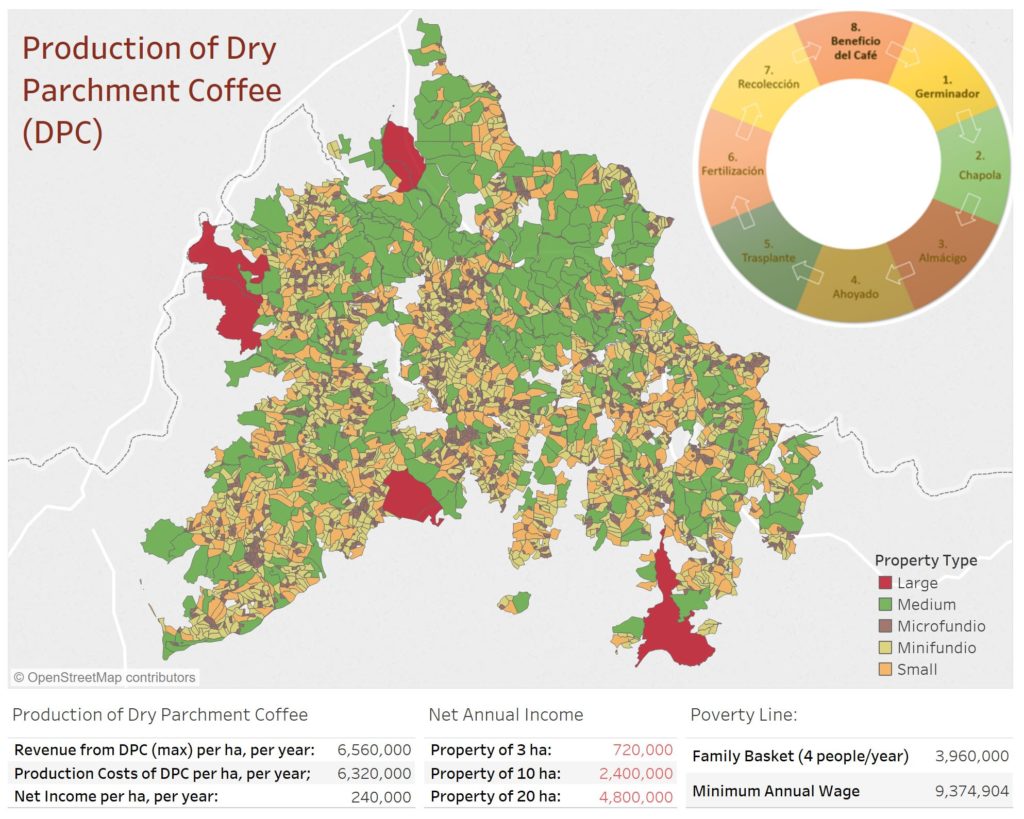
Access to Water is Not Equal: This Framework Can Help
SEI researchers take a first step toward water analysis that considers inequality by developing poverty-related indicators in WEAP.
When it comes to addressing inequality, water management needs improvement.
Analysis often lacks the tools and granular data to detect the disparities that underlie inequality. For example, a model might show that water supply is plentiful at the basin level—without revealing that remote, small farms within that basin struggle with scarcity. The result is a water management system that can fail to recognize, and thus fail to address, existing inequalities.
SEI researchers recently took a first step at tackling this challenge, using an existing poverty framework to analyze the distribution of water resources in Colombia’s Campoalegre Watershed. They detailed their results in a new working paper, Examining poverty and equality in water resources planning.
The paper shows how an integrated water resources management analysis can be adapted and applied to gain insights on multiple dimensions of poverty. In Campoalegre, researchers found indicators of existing inequalities that could get worse as the climate changes and water gets more scarce.
“Access to resources—such as land and water—are key for allowing communities to thrive within the sustainable boundaries of the natural system,” said SEI Scientist Laura Forni, the lead author of the working paper.

This map shows the location of the types of properties. The colour of the properties corresponds to the farm size. The top right image describes the production stages for coffee, and the tables at the bottom provide estimated production and income data correlated with farm size and poverty indicators.
Forni and her co-authors modeled the Campoalegre Watershed in SEI’s Water Evaluation And Planning (WEAP) tool. They then developed poverty-related indicators within the tool using the multidimensional poverty analysis (MDPA) framework developed by the Swedish International Development Cooperation Agency (Sida). MDPA is a powerful conceptual tool that helps practitioners go beyond simplistic poverty metrics (such as per capita income) and provides a useful structure for engaging stakeholders in developing more effective poverty reduction strategies.
The working paper highlights several inequalities in Campoalegre. For example, many families live on small farms that may not generate enough income to meet their basic needs. Numerous farms also are located in remote areas with limited water access; such farms could be disproportionately affected by watershed-wide water shortages predicted to begin within the next 10 years.
Farm size also could indicate inequality when it comes to power: a few families own the large farms, which come with a greater opportunity to input into decisions.
Highlighting such inequalities can help identify solutions, Forni said. In Colombia, the 2016 peace agreement provides an opportunity to improve the conditions in this watershed, to reduce inequities and to create paths out of poverty. Improved water governance, better access to information about water use and demand, and enhanced planning of water infrastructure for future growth will be key to sustaining a positive change in Campoalegre.
This post was originally published on the website of the Stockholm Environment Institute, SEI.
Laura Forni is a Staff Scientist with SEI US. She is an agricultural and resources economist. Laura’s research interests relate to hydro-economic models integration, climate change, and its hydrological and economical implications on water use. Another area of interest is to expand her research towards water conservation strategies and economic development in Latin America.
Marisa Escobar is the Water Program Director at SEI US, based in the Davis office. Her work focuses on creating linkages between physical processes and socio-ecological systems. She uses her expertise on water, including water quality, the physics of water, and the movement of water through watersheds, to produce information on the implications of decisions about water on the overall ecosystem.
Related Projects

